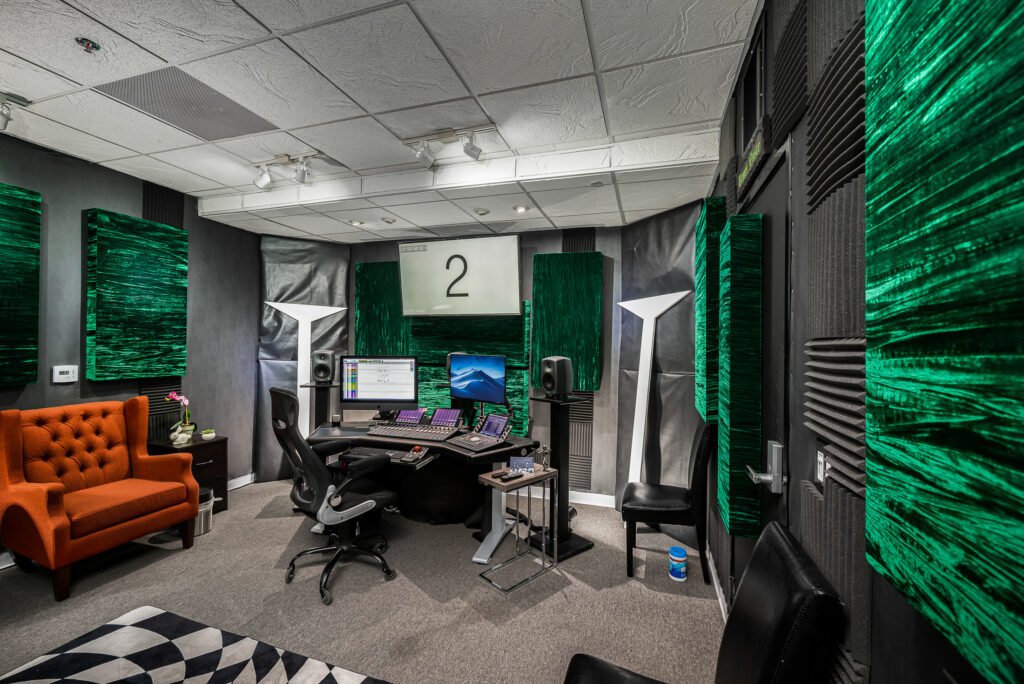- November 20, 2021
ADR – Correcting and Enhancing Film Dialogue

While watching films, most viewers don’t even think about or notice the sound quality of the film’s dialogue. In professionally-made films, dialogue is usually clean, smooth, and easy to understand. A lot of people do not realize that a ton of work is done to make the dialogue in films sound clean. Film sets can be naturally noisy places. On many sets, there are various distracting sounds happening in the “outside world” that cannot be controlled, such as planes flying overhead, car horns, movement and talking of people outside the crew passing by, etc.
These sounds, along with accidental or uncontrollable sounds made by crew members or equipment (e.g. generators, rain machines, dolly tracks, etc.), unfortunately often end up in the films’ audio recordings and may conflict with the actors’ dialogue. One solution for correcting poor-sounding dialogue is a process called automated dialogue replacement (ADR or “looping” for short). Extraneous sounds that conflict with actors’ dialogue is just one reason why filmmakers use ADR.
It is also used for changing or adding lines for story purposes. For example, a line may be changed if filmmakers decide after shooting that the line didn’t make sense in terms of the story line. ADR can also be used to change an actor’s performance or reading of a line.
There are many studios that can be hired for ADR record in Los Angeles. These studios are equipped with high-end microphones and gear, and they provide a controlled acoustic environment, making it easier to achieve clean, high-quality audio recordings. During an ADR session, actors will watch and/or listen to their original on-set performances before or while they are re-recording their lines, as their new dialogue recordings usually need to be performed in a way that looks in-sync with the video (their lips).
Oftentimes, both the timing and inflection of the new recordings need to match that of the original recordings. However, if a new line is being added, there will obviously not be a shot of the actor speaking that line on set, and therefore, it will be placed in when that actor’s face is not on screen. After the recording session, sound editors will edit the new recordings in with the on-set dialogue recordings (the production sound), doing their best to make the new recordings match the sound of the original recordings so that it is unnoticeable to audiences that ADR was done. ADR records in California are common for professional productions. Below is a more detailed list of reasons why ADR is used:
- Noisy location: No matter how quiet your filming location may seem, it still can be nearly impossible to avoid all unwanted sounds getting into your production recordings. Some examples of these unwanted sounds are wind and other weather sounds, actors or crew members accidentally hitting/touching microphones, vehicles or planes, voices of crew members or other people outside of the set, etc. Loud locations, like beaches or city streets, may look great and may be necessary for the story, but they may not be great for sound.
- Changing dialogue for performance: Sometimes, while reviewing the footage after a shoot, directors and/or other crew members will realize that they do not like an actor’s performance of a line and they want the actor to try something different or get a better take. The actor also may have misspoken or “flubbed” a line to where it sounds strange or is unintelligible. It is obviously much easier to record new dialogue than to go back and reshoot a scene/shot.
- Adding dialogue for story clarity: Once the film has been edited together, crew members (and/or test audiences) may feel that a scene or aspect of the story doesn’t make total sense. There may have been plot holes or errors in the original script that were unnoticed until the film was edited together. Adding new lines can be a great tool to help clarify any confusing aspects of a scene/conversation between characters.
- Walla recordings: Film sets are generally kept as quiet as possible so that the dialogue from the main speaking characters in a scene can be cleanly recorded. If there are other actors in the background of a scene, background talking dialogue that is specific to the story (e.g. location, time period, type of people in the environment, etc.) can be recorded and placed into the scene to add life to it and to make the scene feel more real.
- Other reasons: Some distributors may require alternate versions of films with no profanity or adult language, for example, so ADR can be used to replace these words/lines. “Dubbing” may also be needed, which is the process of re-recording all the lines in a film in a different language for foreign audiences.
ADR can be a “lifesaver” for filmmakers, but it is still always best to make sure dialogue is recorded as cleanly as possible on set because it can sometimes be a challenge for actors to recreate the energy of their performances in a studio setting versus being on set with other actors. There are many reputable studios offering ADR record in California that can be hired for any of your ADR needs.